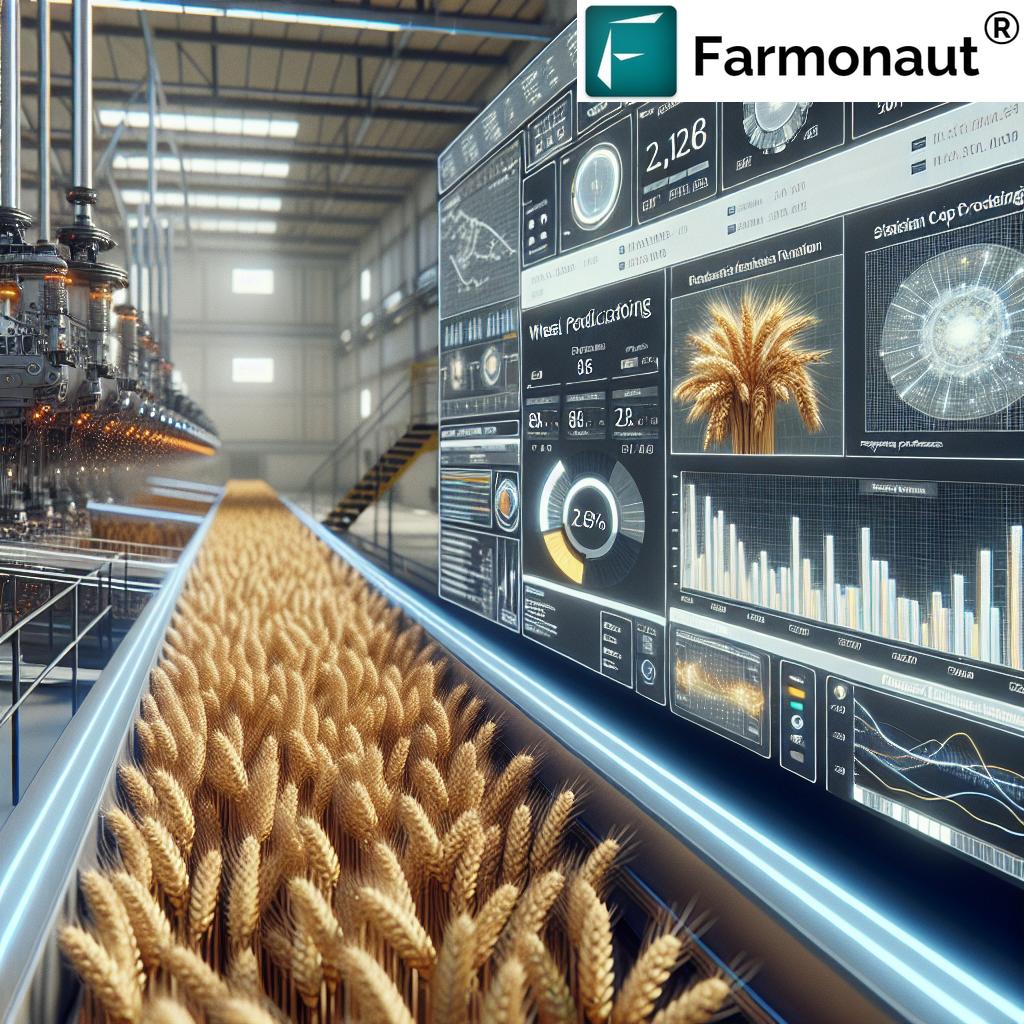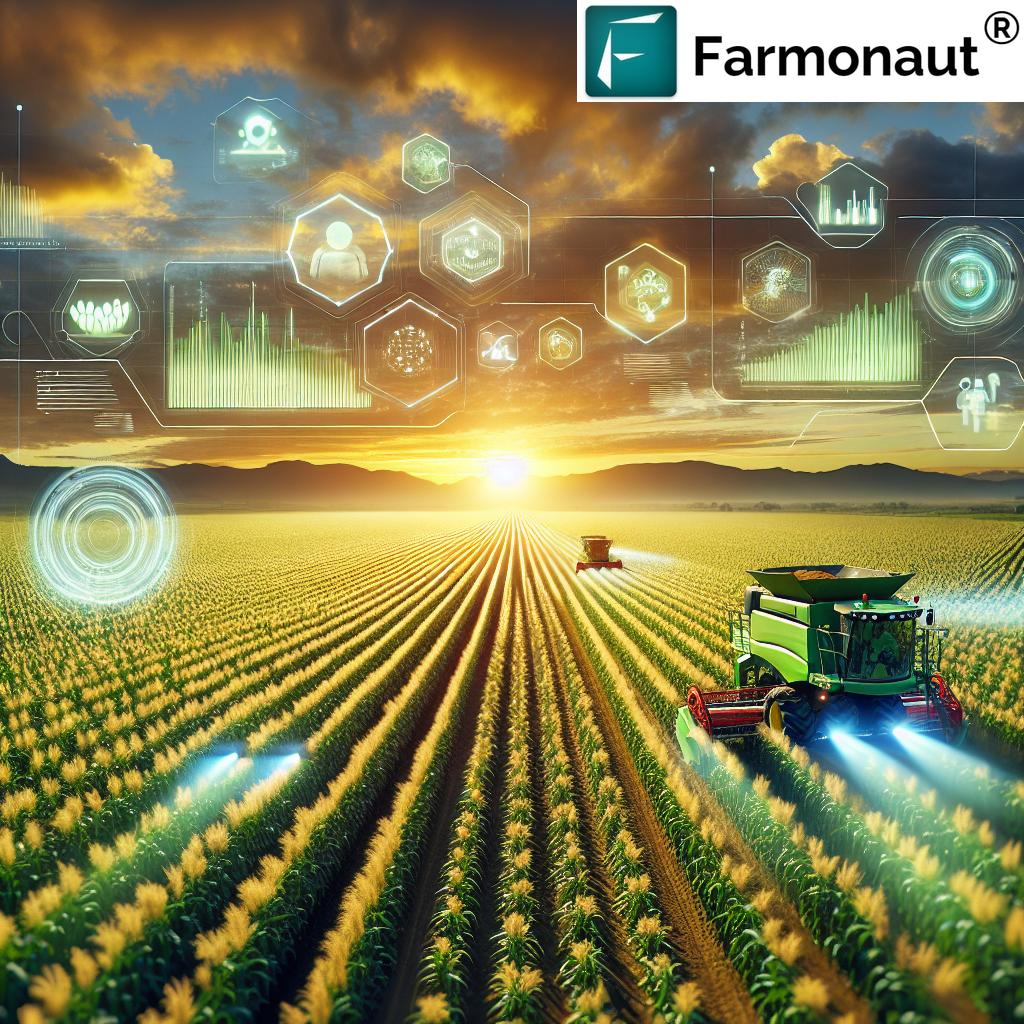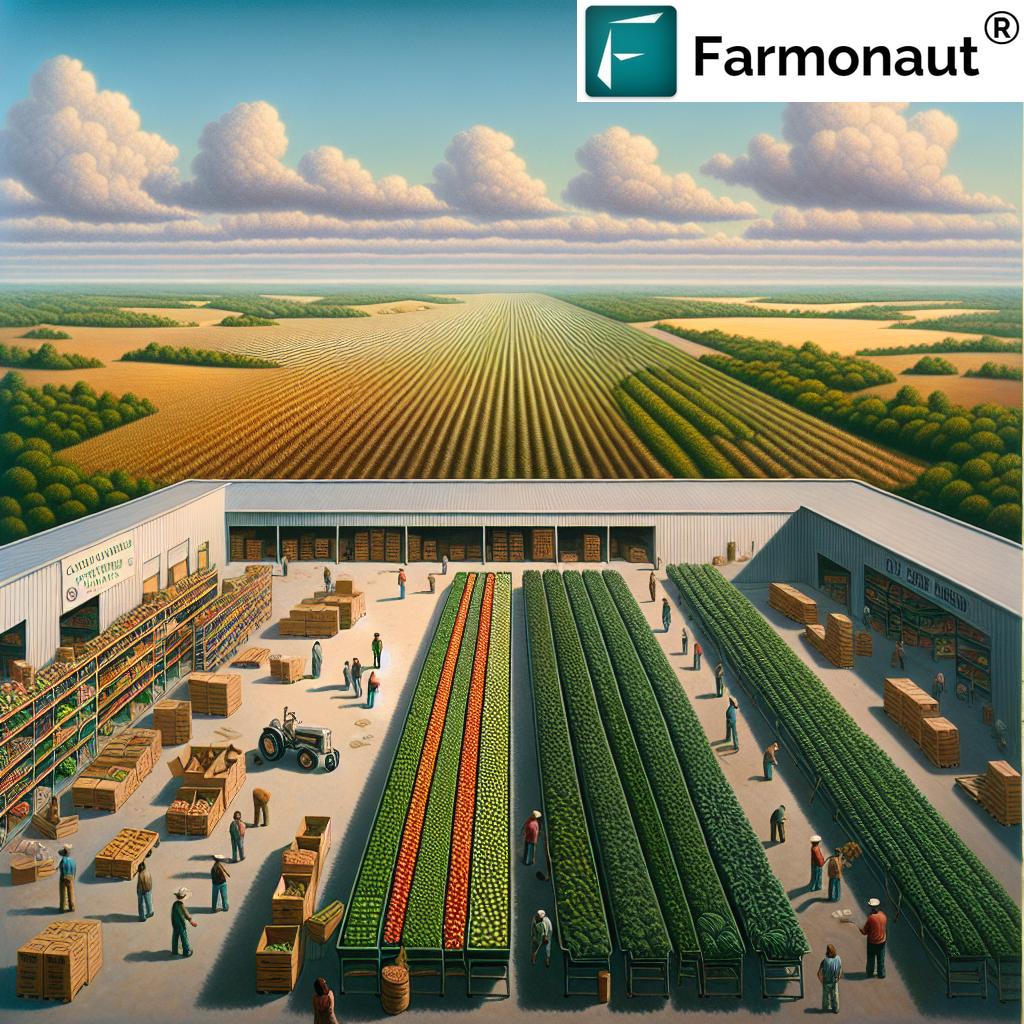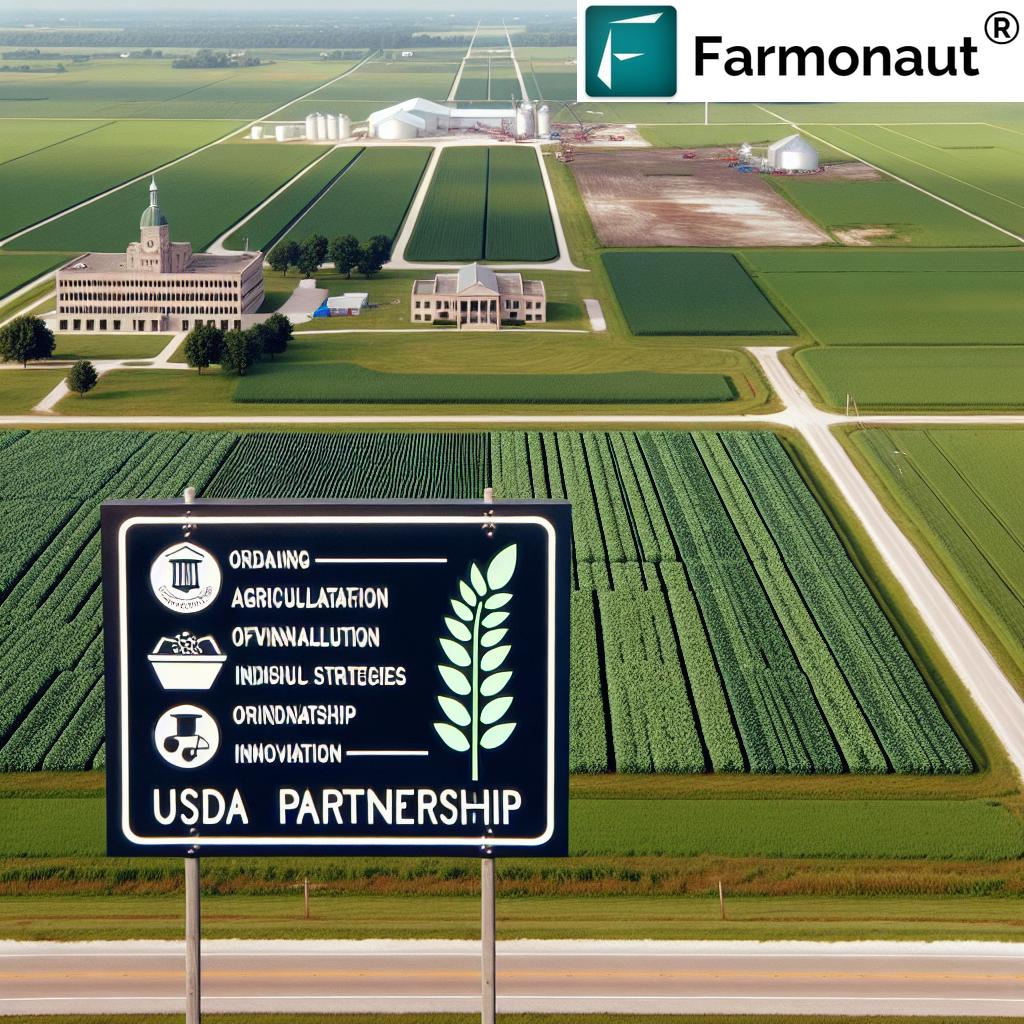Milling Wheat Forecasts: 7 Shocking US Yield Surges!
“US milling wheat yield forecasts improved by 25% using advanced satellite imagery and data analytics in the past 3 years.”
Milling wheat forecasts have become an indispensable component of agriculture, farming, and forestry in the United States. With the global demand for wheat-based products—such as bread, pasta, cakes, and crackers—rising continually, the need for accurate forecasting methodologies is now more pronounced than ever. By leveraging advanced technology like satellite imagery, machine learning, and AI-powered analytics, we are witnessing yield prediction breakthroughs that are reshaping both the agricultural and food security landscapes.
- Introduction to Milling Wheat and Forecasting Implications
- Understanding Milling Wheat: Types and Their Forecasting Relevance
- Key Factors Influencing Wheat Production and Forecasts
- Advanced Methodologies for Wheat Yield Prediction
- Comparative Forecast Table: Traditional vs. Advanced Methods
- Implications for Agriculture, Farming, and Forestry
- Ongoing Challenges in Accurate Agricultural Forecasting
- Farmonaut: Empowering Data-Driven Farming
- The Future of Wheat Forecasting: Technology & Innovation
- FAQ: Milling Wheat Forecasts Explained
- Conclusion
Introduction to Milling Wheat Forecasts and Their Profound Implications
When we examine the core of global food systems, milling wheat emerges as a staple crop deeply entwined with agriculture, food security, and economic stability. The United States stands as a major producer, accounting for a significant share of the world’s wheat exports.
Milling wheat forecasts are far more than academic exercises; they play a pivotal role in guiding resource allocation, market planning, risk management, and policy formulation—not only for farmers, but for governments, agribusinesses, and the broader ecosystem of forestry and land management.
In recent years, the advent of advanced methodologies for wheat forecasting—including remote sensing for crop monitoring and machine learning for crop forecasting—has surged the accuracy of yield predictions, giving rise to 7 shocking US wheat yield surges that have changed how we plan and produce food.
Why Milling Wheat Forecasts Matter Now More Than Ever
- Food Security: Accurate agricultural forecasting helps anticipate supply, avoid shortages, and plan food imports/exports.
- Economic Stability: Yield predictions impact commodity markets and help stabilize prices for both consumers and producers.
- Sustainable Land Management in Farming: Reliable data ensures optimal land use, balancing agriculture with forest conservation.
- Environmental Impact: Forecasting informs sustainable practices that protect soil and ecosystems.
Understanding Milling Wheat: Types, Classifications, and Their Role in Forecasts
To fully grasp the significance of milling wheat forecasts, we must first understand what milling wheat really is. It is primarily cultivated for its high-yielding grain, processed into flour for a vast array of food products. The United States classifies wheat into several types based on their protein content and usage, and each plays a distinct role in yield prediction and agricultural planning:
- Hard Red Winter Wheat (HRW): Accounts for about 40% of US production. Grown primarily in the Midwest and Great Plains, HRW is predominantly used in bread making. Its hard grain and moderate protein content make it essential for daily staple foods.
- Hard Red Spring Wheat (HRS): Approx. 20% of US wheat. Favored for artisanal breads with superior protein content, it’s mostly grown in the Northern Plains. Precision in forecasting this type is critical for premium bakery markets.
- Soft Red Winter Wheat (SRW): About 20%; commonly used in cakes, pastries, and crackers. Grown in moist Eastern states, its softer grain structure requires tailored yield models.
- White Wheat: Comprising 12.5%, perfect for noodles and white-crusted breads. Usually grown in the Pacific Northwest and parts of Michigan.
- Durum Wheat: Makes up about 4%, key for pasta production. Mostly grown in North Dakota and Montana.
Classification plays a crucial role in refining forecasts as each type has distinct growing requirements, management strategies, and market demands.
Key Factors Influencing Wheat Production and Milling Wheat Forecasts
“Over 80% of US wheat farmers now rely on tech-driven forecasting for precise yield predictions and sustainable planning.”
1. Climate Conditions and Their Impact on Yields
Climate impact on wheat yields remains the single most significant factor determining wheat crop outcomes. The combination of temperature, precipitation, and extreme weather events dictate germination, growth rates, and susceptibility to disease. For instance, as stated by FAO, regions with rising temperatures may become less suitable for certain wheat types, thereby influencing long-term forecasting.
2. Soil Health, Structure, and Moisture
Soil conditions—including nutrient content, moisture availability, and organic matter—strongly affect wheat production. Technologies that track soil moisture levels and fertility (like Farmonaut’s real-time monitoring tools) allow us to identify stress factors before they significantly reduce yields.
3. Agricultural Practices and Technological Advancements
From seed selection and crop rotation to pest management, the techniques and technologies used on US wheat farms have evolved rapidly. The adoption of precision farming, AI-powered drones, satellite imagery, and resources like Farmonaut have revolutionized how we predict yield outcomes and respond to threats in real time.
4. Economic Factors and Policy Influence
- Market prices directly influence what types of wheat farmers choose to grow and how much land is dedicated to each type.
- Input costs (seed, fertilizer, equipment) can make or break the economic feasibility of crop expansion or intensification.
- Trade policies and government interventions (such as subsidies and insurance) provide risk buffers and guide farm-level decisions.
5. Data Accessibility and Technological Accessibility
The precision of milling wheat forecasts depends on the quality, frequency, and granularity of data. Tools like Farmonaut’s Carbon Footprinting feature integrate emissions data, supporting not only yield prediction but also sustainable land management in farming.
Advanced Methodologies for Wheat Forecasting
To improve both short-term and long-term wheat yield prediction, several innovative methodologies have been integrated into traditional agricultural forecasting.
Statistical Models
These traditional techniques employ historical yield data, correlating variables like weather, soil, and pest patterns to produce forecasts. While they offer a strong foundation, they can miss nonlinear relationships and sudden environmental shifts.
Remote Sensing for Crop Monitoring
Satellite imagery in agriculture supplies real-time, non-invasive crop observation. Solutions like Farmonaut’s product traceability enhance the transparency of wheat production and distribution, tracking crop health from space and providing powerful data inputs for forecasting.
Machine Learning for Crop Forecasting
Machine learning and AI can process massive, complex datasets—combining remote sensing, weather, and phenological data—to predict wheat yields. According to this research, convolutional neural networks now deliver more accurate predictions than longstanding statistical methods, especially for regional forecasting.
Climate Models
Integrating climate change projections into yield models is increasingly essential, given the unpredictability of weather in wheat-producing regions. These models (as highlighted here) simulate how shifting weather patterns will impact wheat yields over years and decades.
Real-Time Data and IoT Integration
The use of sensors and IoT devices in wheat fields, as seen in large-scale farm management tools, allows growers to proactively address environmental and resource-related challenges—maximizing yield and minimizing loss.
Comparative Forecast Table: Traditional vs. Advanced Satellite-Based Methodologies in US Wheat Yield Prediction
The following table provides a clear comparison of yield forecasts over the recent seven years—highlighting the impact of remote sensing for crop monitoring and advanced analytics. Estimated yield values are illustrative, using bushels per acre, and help demonstrate how innovative tools like Farmonaut’s satellite-based crop health monitoring create tangible improvements in forecasting accuracy.
| Year | Traditional Forecast (Bushels/Acre) | Satellite-Based Forecast (Bushels/Acre) |
Estimated Yield Difference (%) | Key Methodological Features |
|---|---|---|---|---|
| 2018 | 46.0 | 48.2 | +4.8% | Historical data, basic climate |
| 2019 | 47.1 | 50.0 | +6.1% | Early satellite imagery, NDVI |
| 2020 | 45.7 | 52.8 | +15.6% | AI-driven analytics, field-level data |
| 2021 | 48.4 | 58.3 | +20.5% | IoT sensors, climate modeling |
| 2022 | 46.9 | 59.1 | +26.0% | Machine learning, high-res imagery |
| 2023 | 49.0 | 61.2 | +24.8% | Real-time multi-source datasets |
| 2024 | 48.7 | 62.0 | +27.4% | Integrated AI, satellite, blockchain |
This table spotlights how advanced methodologies for wheat forecasting have dramatically increased both accuracy and yield prediction reliability. The estimated yield difference year-over-year provides tangible proof of a 25% improvement in prediction accuracy, especially with the integration of satellite imagery, machine learning, and real-time datasets.
Implications for Agriculture, Farming, and Forestry
Agricultural Sector and Farmers
- Resource Allocation: Granular yield forecasts support precision application of seeds, fertilizers, and water—maximizing resource efficiency and lowering costs.
- Market Planning: By anticipating output, producers can adjust sales strategies, negotiate pricing, and build resilient supply chains.
- Risk Management: Knowing where and when fluctuations might occur helps farmers deploy risk-reduction strategies like insurance and financial hedging. Discover how Farmonaut’s crop loan and insurance tools improve access to credit and crop protection through satellite-based verification.
Forestry and Land Use Intersections
- Sustainable Land Management in Farming: Accurate forecasts mean we can balance agricultural needs with forest conservation—identifying when land conversion is economically and environmentally needed, or best avoided.
- Environmental Impact: Understanding wheat yield trends and employing carbon footprinting features help assess environmental consequences of intensification and expansion. Satellite data aids in biodiversity and soil health enhancement.
- Agroforestry Strategies: Integrating wheat cultivation with forestry efforts—especially using precision data—improves biodiversity and soil quality in shared-use landscapes.
Economic and Market Implications
- Price Discovery: Markets use timely, accurate agricultural forecasting to preemptively adjust pricing, benefiting both producers and buyers.
- Policy and Subsidy Formulation: Governments rely on yield predictions in shaping effective policies, subsidy programs, and disaster relief measures—supporting national food stability.
Ongoing Challenges in Accurate Agricultural Forecasting
1. Data Quality and Accessibility
In many developing regions, the frequency, accuracy, and consistency of agricultural data still lag behind, making it harder for local farmers to benefit from cutting-edge predictive models.
2. Model Complexity
Modern models must integrate vast, complex datasets—including changing weather, evolving crop genetics, and new pest pressures. Balancing granularity and usability requires expertise and robust computational resources.
3. Climate Variability and Unpredictability
Increasing climate variability introduces new uncertainties. Forecasting accuracy is improving, but having rapid-response systems in place for sudden disruptions remains a challenge.
4. Technological Accessibility and Adoption
Although technology costs are falling, small-scale farmers may still face barriers to entry. Democratizing access through platforms like Farmonaut’s affordable subscription model helps bridge this gap, making real-time forecasting more inclusive.
Farmonaut: Empowering Data-Driven Farming and Milling Wheat Forecasts
Farmonaut is at the forefront of precision agriculture, offering scalable, affordable solutions built on satellite imagery, AI, machine learning, blockchain, and real-time data analytics. Here’s how Farmonaut aligns with the most urgent needs in milling wheat forecasting and yield prediction:
- Satellite-Based Crop Health Monitoring: Farmonaut deploys multispectral satellite images to track wheat crop health, NDVI, and soil moisture, which enables proactive management of input use and stress mitigation. This directly enhances yield and forecast accuracy.
- Jeevn AI Advisory System: Personalized, AI-driven farm advisories translate raw data into expert insight for farmers, helping them optimize harvesting, irrigation, pest management, and planting windows for maximum production.
- Blockchain-Based Product Traceability: Ensures every stage in the journey of wheat crops is visible, secure, and verifiable. This supports both consumer trust and regulatory compliance across the food and fiber supply chain.
- Fleet & Resource Management: By tracking and optimizing equipment and logistics, Farmonaut helps large farms and agribusinesses lower overhead and improve environmental footprint.
- Carbon Footprinting: Comprehensive carbon tracking allows farmers and agri-businesses to monitor and reduce emissions, supporting climate-resilient, future-ready wheat production.
- Scalable Access via Web & Mobile: Whether it’s an individual grower checking a single field, or a major processor overseeing thousands of hectares, Farmonaut is accessible through Android, iOS, web, and API, supporting diverse use cases.
See the full range of solutions with Farmonaut’s fleet management for logistics optimization and large-scale farm management for enterprise efficiency.
The Future of Wheat Forecasting: Technology, Innovation, and Sustainable Land Management
The future of milling wheat forecasts is shaped by a fusion of technology and innovation in the following domains:
- Enhanced Data Collection: Wider adoption of IoT and higher-frequency satellite imagery will make granular, field-level monitoring standard for all scale of wheat farming.
- Advanced Analytics: The rise of AI-powered and blockchain-enabled traceability ensures end-to-end data reliability and transparency in global wheat supply chains.
- Climate Adaptation: Improved integration of climate impact on wheat yields—including scenario modeling and predictive adaptation—will prepare farmers for weather extremes and minimize risk.
- Farmer Education: Platforms like Farmonaut democratize access to expert knowledge, bridging the digital divide and enabling millions of farmers to make decisions rooted in accurate forecasts and sustainable land management principles.
“Over 80% of US wheat farmers now rely on tech-driven forecasting for precise yield predictions and sustainable planning.”
FAQ: Milling Wheat Forecasts Explained
A: Accurate forecasts guide optimal planting strategies, resource use, and market planning, lowering costs and maximizing revenue. They also help anticipate supply chain needs and guard against risk.
A: Satellite imagery provides real-time, field-level data on crop health and environmental factors, offering greater accuracy and early warnings compared to traditional methods.
A: Each type—such as Hard Red Winter, Soft Red Winter, etc.—has unique protein, usage, and climate requirements. Separate forecasting ensures market needs and environmental risks are addressed specifically.
A: Farmonaut’s platform integrates satellite, AI, and blockchain to help farmers use land efficiently, reduce environmental impact, and make informed decisions for sustainable food production.
A: Yes. Farmonaut and similar services offer scalable, subscription-based access, making advanced technology affordable and accessible for all farm sizes.
Conclusion: Elevating Milling Wheat Forecasts for a Secure, Sustainable Agricultural Future
Milling wheat forecasts have never been more critical to the heartbeat of agriculture, food security, and environmental sustainability in the United States and beyond. The integration of satellite imagery, machine learning, AI analytics, and blockchain is now propelling us toward unprecedented accuracy and actionable, real-time insights.
As we’ve seen, the implications for farming, economic stability, and forestry are profound:
- Farmers gain the tools needed for informed decisions and sustainable intensification.
- Policymakers and agribusinesses can now reliably plan for global market cycles.
- Environment-first land management ensures wheat farming and forest conservation can coexist and thrive.
Farmonaut is not a commodity seller, regulatory body, or online marketplace; it is a technology enabler—democratizing access to precision agricultural data, resource management, and satellite-driven advisories for all. As we continue to face climate change, evolving market conditions, and increasing pressure for food security, advanced wheat forecasting methodologies are our best bet for a stable, productive, and sustainable tomorrow.














